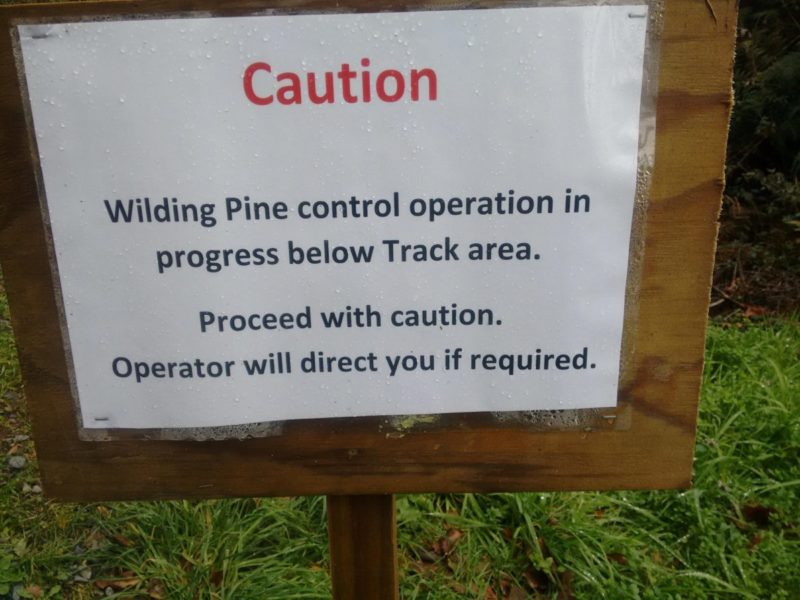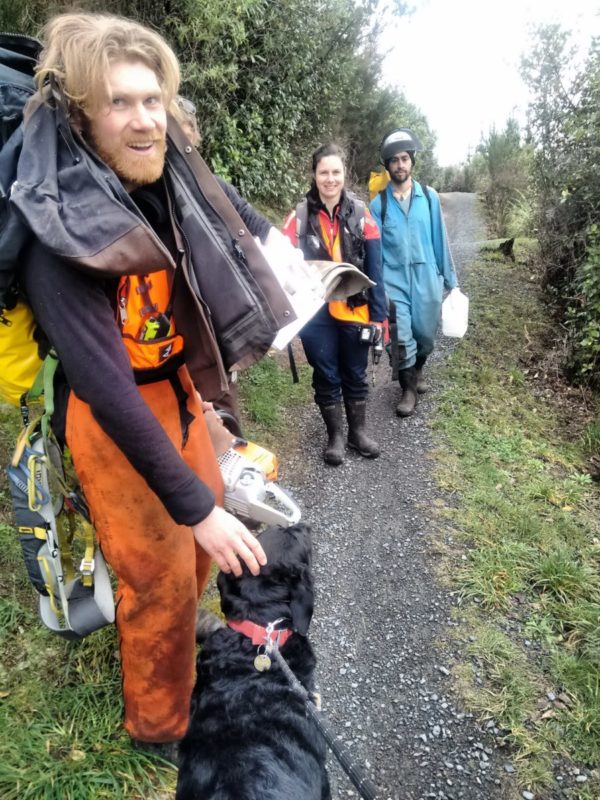Weather and Fishing
Last Sunday was a beautiful Turangi day. The morning was planting day on the Waiotaka River. The sun shone, it was calm. For some time now as with the rest of the country it has been persistent rain/showers, cold and windy. The 1 month graph shows 140mm for the month.

Fishing
The fishing continues with excellent quality fish being caught and pleasing results for most. The school holidays saw many anglers on the river. The Bridge Pool remains a ‘go to’ pool. I walked our grandchildren’s dog daily over the bridge and saw a fish being caught each time.
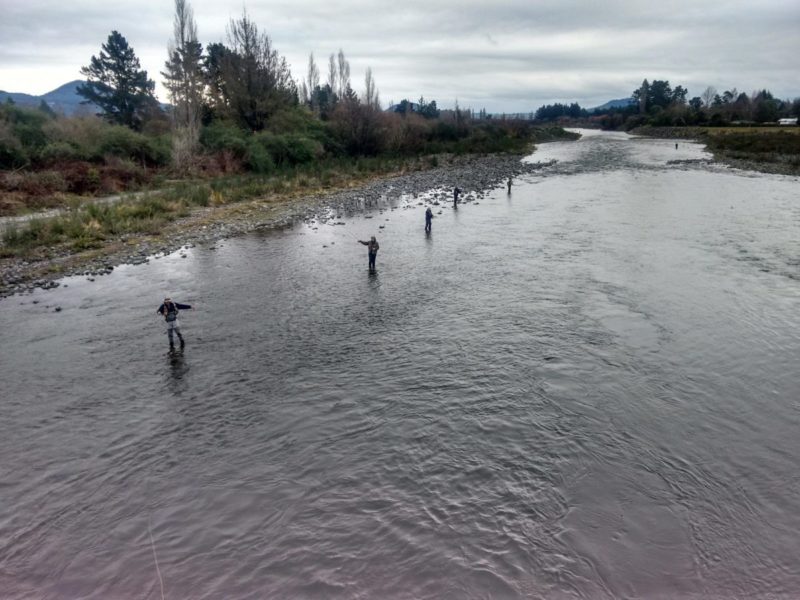
Impact of the recreational release of water on the Tongariro River.
A consent was granted for some recreational flows on the rivers and streams used for the Tongariro Power Development (TPD) and as Genesis operates the scheme they must comply with the consent conditions. The weeekend of the 12 and 13 July saw two releases. Only the Saturday release from the Poutu Intake had an impact on the Tongariro River. The advice was that an additional flow of 30 m3/sec would be released from Poutu at 9.00am for 6 hours finishing at 3.00pm.
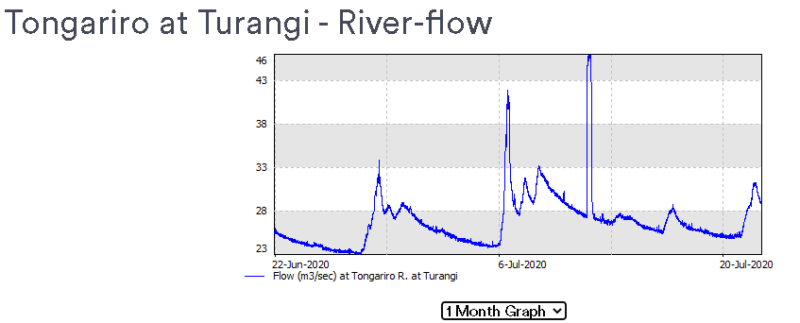
It took 3 hours for the increased flow to reach Turangi so the additional 30 m3/sec was on top of the existing 25 m3/sec thus 55 m3/sec. The river coloured to dirty as a result and meant for me that it was not fishable,
Wilding Pines removal
My walk with the dog was to walk to the bridge and then the loop of the Tongariro River Trail from the SH1 bridge to the Major Jones bridge. I was greeted by this sign and the crew from OPC doing contract work for DOC using Covid19 money.
Waiotaka River planting
I tried to have this blog on line on Friday but I had technical difficulties which delayed the blog. I therefore failed to advise of the Waiotaka planting. The planting was co-operation between Project Tongariro and Rongomai Marae. The plan was to plant 5040 plants. It was part of a project to plant 40,000 trees. It is impressive to turn a willow infested stream into native vegetation.
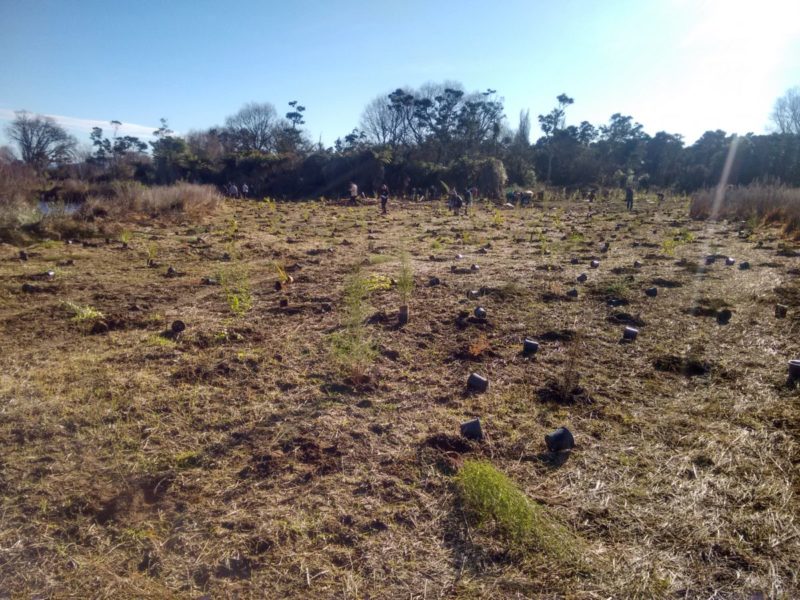
The land had been cleared and post hole digger meant that plants removed from their grind packs went into the hole along with a fertiliser pellet, making it an easier task than having to dig holes by hand.
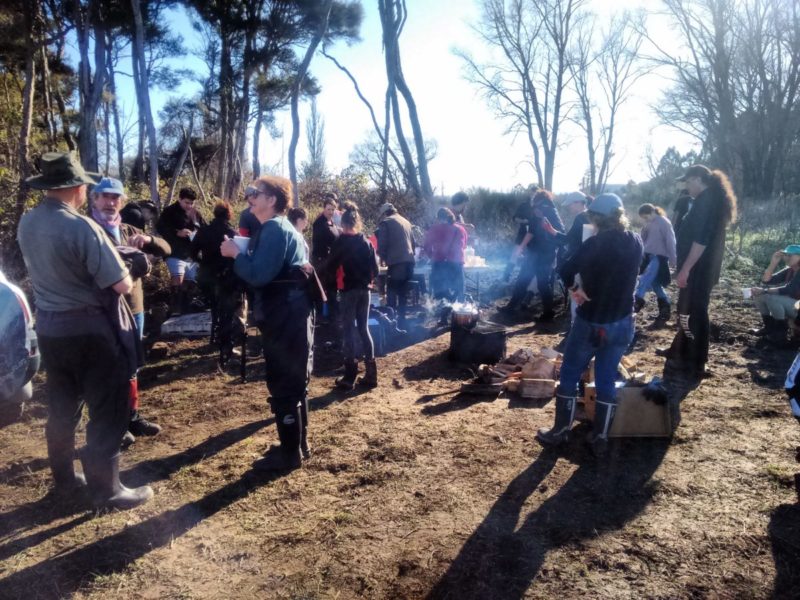
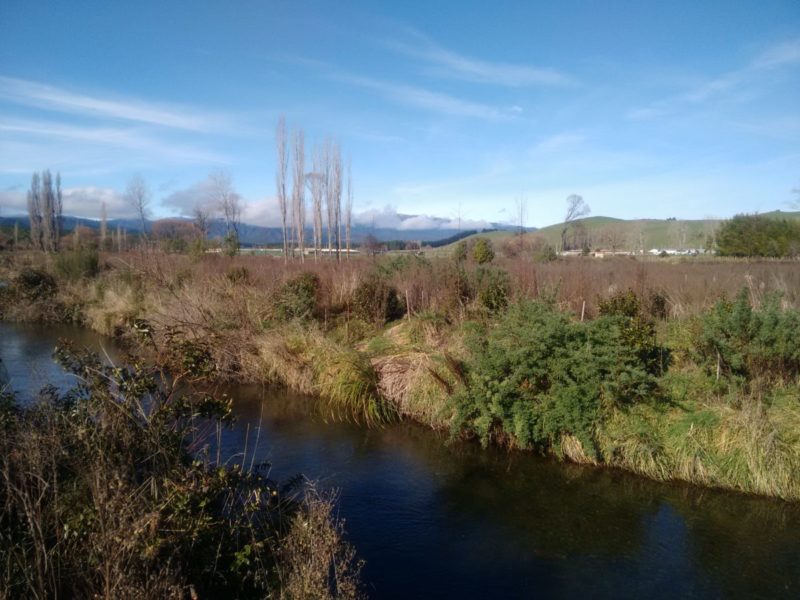
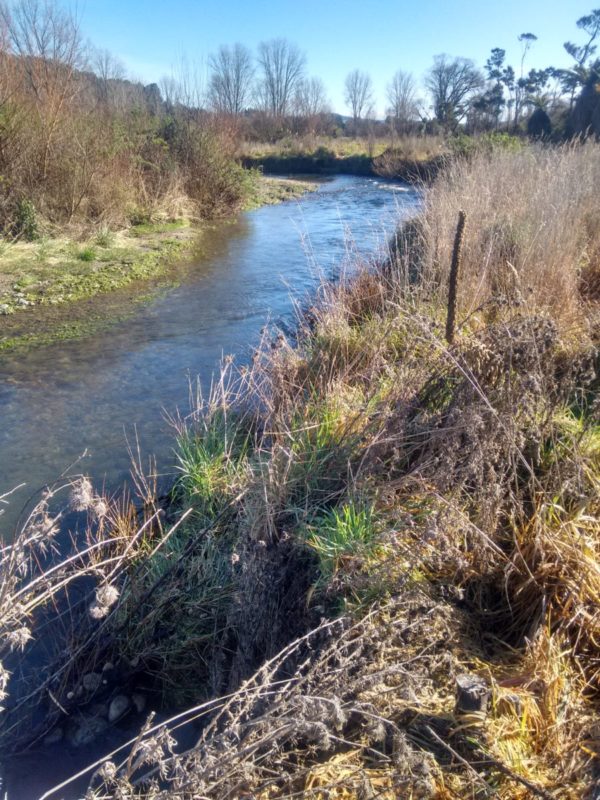
The following article with photos from the Washington Post appeared on my phone as part of Google news. Part of the technical problems I had were the photos that I have excluded, so I thought it of interest to include this instead.
Casting about for a pandemic-friendly pastime? Eight reasons to consider fly-fishing.
By Heather Balogh Rochfort
July 8, 2020 at 12:00 a.m. GMT+12
It’s not very often that anyone compares a Brad Pitt movie to a worldwide pandemic, but that’s what’s happening in the world of fly-fishing. While other businesses try to dig themselves out from the damaging effects of the novel coronavirus and quarantine, many fly-fishing shops across the country are noticing a different trend: Business is booming.
“We’ve been doing this for 160 years, and the last time we saw a push this big was when Brad Pitt made ‘A River Runs Through It,’ †says Simon Perkins, the newly appointed president of fly-fishing giant Orvis. The movie was based on the book of the same name by Norman Maclean.
Unlike spin (traditional) fishing, which uses bait to catch a lot of fish, fly-fishing uses artificial flies and overhead casting to fool a fish. Anglers can buy premade flies or make their own at home; fly-tying is a popular activity for people when they aren’t on the water.
Fishing in general is on the rise. Minnesota, for example, is reporting a 26 percent increase in fishing licenses; Vermont has seen a 50 percent increase in resident fishing licenses. But for many anglers, fly-fishing is appealing because of its simplicity and the masterful in-water casting techniques that connect them with nature.
Sally Jenkins: When the world gets too loud, it’s time to go fishing
“We’ve wanted to learn for years so that we could fly-fish while backpacking into high alpine lakes,†says Katie Stapleton, a California resident who recently took up the activity.
Historically, this is a sport that flies under the radar. Although fly-fishing has seen an increased number of participants over the past decade, it’s still small potatoes when compared with widespread outdoor activities, such as hiking.
Fly-fishing saw record participation in 2018 when 6.9 million people tackled it, according to Take Me Fishing, a sister brand of the nonprofit Recreational Boating & Fishing Foundation. But those numbers pale in comparison to the 47.9 million hikers who hit the trail during the same year, as reported by the Outdoor Foundation, the philanthropic arm of Outdoor Industry Association.
When the coronavirus hit in March, fishing shops found themselves questioning their futures along with other businesses. But thanks to the Internet, a resurgence in online sales offered a much-needed glimmer of hope.
“It was like everyone realized this was their opportunity to do the things they always wanted to but never previously had the time,†says Hilary Hutcheson, fly-fishing guide and owner of Lary’s Fly & Supply in Columbia Falls, Mont.
Although Hutcheson didn’t originally have an online shop, she quickly pivoted and watched sales boom through digital fly-tying lessons. “It was like arts and crafts for anglers,†she jokes.
As the country reopened, outdoor recreation surged. According to Perkins, Orvis’s online sales are raging, with its fish business up 100 percent compared with last year. Perkins also notes that sales on the Clearwater and Encounter entry-level rod kits were up 100 percent in early June, indicating that beginners are jumping into the sport.
Another pandemic-friendly sport: Roller skating
Tim West, owner of Breckenridge Outfitters in Breckenridge, Colo., has noticed the same thing. “Our guided trips are insanely busy,†he says. “We’ve seen a lot of first-timers coming in because they couldn’t travel or do other things like backcountry skiing, and that snowballed into guided trips once we were allowed.â€
Stapleton is one of those beginners who opted for a guided lesson. “After being shut inside through quarantine, we were dying to get outside in a safe way,†says Stapleton, who completed a course at Alpine Angling in Carbondale, Colo. “It’s like the perfect pandemic activity.â€
Here are eight reasons cited by practitioners to back that up:
Social distancing is the norm
Crowds are frowned upon when fly-fishing. Many anglers go solo, and even those who fish with friends opt to maintain their distance to avoid “cross-casting,†or tangling one fishing line with another. Anglers always stand at least 75 to 100 feet away from each other, far surpassing the minimal social distancing requirement.
Water is everywhere
Traditionally, anglers prefer scenic rivers and lakes to partake in fly-fishing. However, when quarantine restrictions prohibited travel, people got creative and used whatever was accessible — even if it was a suburban pond or an urban river. “Fishing used to be narrowly defined,†Perkins says. “But now, if you have water and a fly rod, you’re fly-fishing.â€
It is relatively affordable
According to Orvis, an entry-level Encounter box kit, including the rod, reel and line, costs $200. Flies are $2 to $3 each. Permits are also needed. Prices vary from state to state, but annual resident permits cost roughly $50. And, once you make the initial investment, the costs dramatically subside.
You can consume your catch
Anglers are often fortunate enough to routinely fish, so they frequently practice “catch and release†and throw the fish back. However, when the pandemic led to empty store shelves, Tracy Nguyen-Chung in Portland, Ore., founder of Brown Folks Fishing, noticed that some people were fly-fishing to feed their families. “The pandemic presented new challenges in seeking fresh food, so this provides a meaningful way to supplement groceries,†she says.
It can improve mental health
Chronic stress levels are up, says the American Psychological Association. Fortunately, time outside is proven to decrease anxiety levels, and fly-fishing itself has been shown to be both meditative and calming. “You experience and understand nature on an intimate level,†Perkins says. “It’s a lifelong journey of discovery, and I think that’s why it’s becoming a safe way for people to connect and give themselves. People are leaning into their health right now, and this feeds their emotional strength.â€
It’s a bonding activity
Families are getting on the water more than ever before. Many families quarantined together, so they feel comfortable taking fly-fishing lessons together, too. According to West, Breckenridge Outfitters is seeing an increase in parents and kids wanting to get on the water. “Trout don’t live in ugly places,†he says. “So why not enjoy the beautiful scenery as a family?â€
It’s a return to tradition
Hutcheson believes that many people turned to fly-fishing in the midst of the pandemic because it was a return to traditional skills. She notes that activities such as bread-making and gardening surged, too. “We may not outwardly realize it, but I think there is this deep-seated feeling of anxiety about what is happening in the world,†Hutcheson says. “So, we acquire this skill and become part of the life cycle. That’s how we know we are going to be okay.â€
Nguyen-Chung agrees, emphasizing that fly-fishing has always been culturally significant for many anglers of color. However, she adds, “I’ve actually fished a lot less during the pandemic as a queer Asian American woman.†Because of hate crimes against the Asian community, she says, “it hasn’t felt safe to go by myself.â€
Eric Wilson
Secretary

